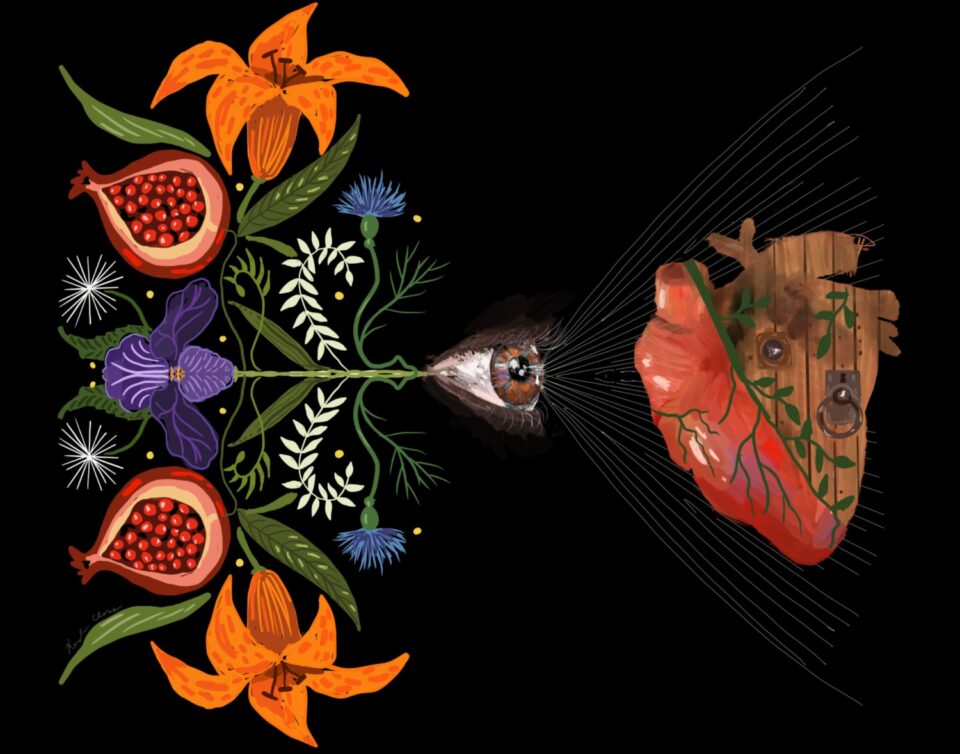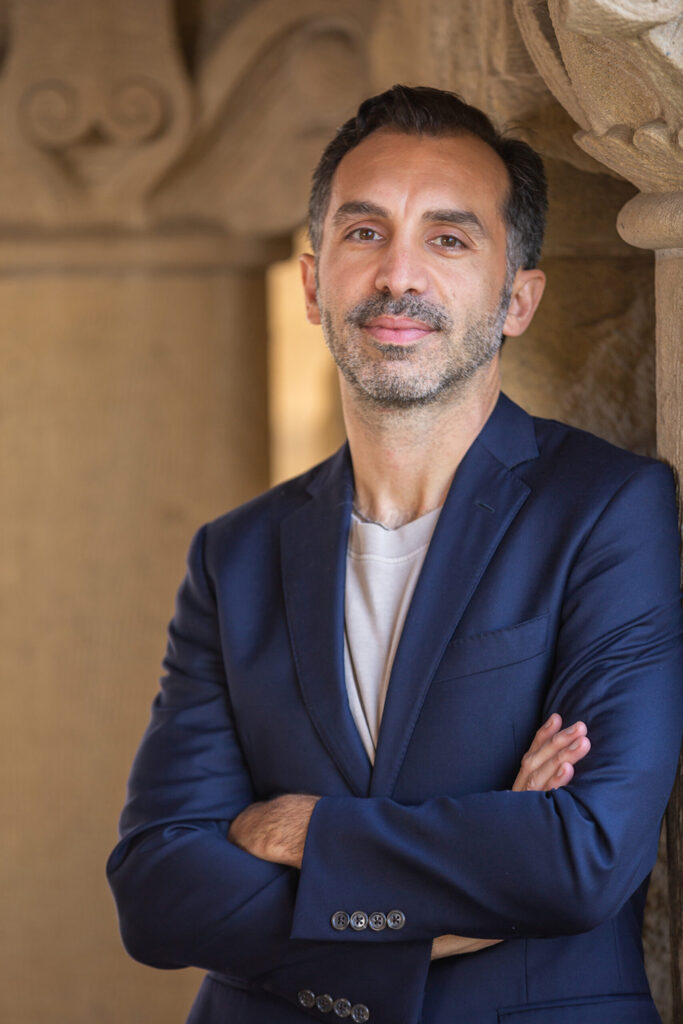The power of love at first sight
Listen to the essay, as read by Emanuele Lugli, assistant professor of art and art history in the School of Humanities & Sciences.
My colleagues chuckle when I confess it. My mum stares at me as if I told her that I have just seen an alien drop down out of the sky. Countless others have feigned surprise – and I am just talking about the nice people. Still, no one can make me change my mind. For me, the most fascinating question, the one I return to over and again as it makes the wheels of my brain spin at unprecedented speed, is about the nature of love at first sight. Does it exist or is it just a collective hallucination?
The reason that I find love at first sight bewitching is that it is a complete mystery, and yet people behave as if it were not. The industry of dating apps is built on the notion that romance must come to you in the form of pictures. And these apps contribute to why more than 50 percent of Americans claim to believe in it. (Another reason, of course, is that the notion has been drilled into them by countless novels, plays, Hollywood movies, and TV shows.)
Yet, no one can explain it.
So, as an art historian – someone who researches the ways images are constructed and the ways visual culture shapes society – I feel it is my duty to find an answer. I ask left and right. Cognitive scientists tell me that more than 50 percent of the cortex, the surface of the brain, is devoted to processing visual information, thus making a point of why vision plays such a fundamental role not just in life but also in love. Biologists direct me to phenotypes, the physical manifestations of DNA, which communicate reproductive fitness. They thus present falling in love less as a magical surrender than a natural process of mate selection.
Psychologists and sociologists look for conditioning elements but, like most academics involved in the quest, produce clinical discussions that ignore that jolt of joy that makes love at first sight so irresistible. For me, forgetting about this pleasure is like expatiating on the notes of champagne and forgetting about the fizz.
It is not just scientists who exhaust this effervescence. Plenty of writers, artists, and filmmakers have dulled the sparkle of love at first sight by presenting it in stereotypical terms. So I was captivated, elated even, when I watched Heartstopper, the Netflix coming-of-age drama that has become a hit. Like many, I was struck the first time I saw Charlie meeting soulmate Nick in a crowd of students. The camera follows Charlie’s gaze as he searches for the new desk to which he has been assigned; a backpack moves out of the frame, and here he is: Nick, out of focus, bathed in the rainbow morning light. Charlie freezes, and the camera with him. His vision sharpens. A synth grates in, a drum mimics a heartbeat, and two hand-drawn leaves enter the screen, gently flying around Charlie’s face, which opens into a smile.
The ancient Greek lyric poet Sappho captures a similar state by speaking of a delicate fire that suddenly rushes under her skin at the sight of an attractive woman. Sappho’s heart flutters: her tongue cannot move. Almost three millennia have passed since she wrote those verses, and love at first sight continues to be articulated as a paradox. When it occurs, reality is no longer whole: there is now an outside that the lover occupies like an extraneous body, and an interiority, teeming with unaccountable life. Heartstopper visualizes such a split by introducing the cartoon leaves, as a way to suggest both the shift to a symbolic plane (the leaves are two to make us think of coupling) and the presence of a mysterious wind, the very breath of life.
I know it sounds trite – the suspension of reality, the ocular flirtation, the colored sunbeams – but this simplicity, call it innocence even, may be the reason why love at first sight feels so irresistible. It conjures up ideas of a blank slate, a new starting point where life bursts at its fullest because it is not corrupted by prejudices, obligations, and crippling ideas of the self. When we see someone new, even our notions of the self brims with possibilities. In other words, love at first sight brings hope.
The possibility of a different future, as well as the fact that the notion of love at first sight is shared by many cultures, are exhilarating to me. You see: I did not use to think like this. I grew up in Italy, a country that has turned the idea that walking into the world and meeting love, from everyone, everywhere, is an actual thing. I used to think of this national delusion as a product of my country’s heavy-handed cultural policy. Most of Italy’s literary and artistic achievements (Ovid, Virgil, Dante, Michelangelo) – those that saturate the curricula of its high schools and universities – are so drenched in love at first sight references that I am not surprised that, deep down, Italians think that their passions are somewhat ruled by the gods, catching glimpses of them from above the clouds, determining their amorous interests by firing arrows.
But Italians are not unique in their infatuation with the idea of love at first sight. The more I look, the more I discover its global influence (a famous example from China: Wang Shifu’s The Story of the Western Wing). Such a realization leads me to reflect on the possibility of knowing.
Do we believe in love at first sight because its idea started spreading such a long time ago that today, after an unfathomable scalar growth of hundreds of years, it passes for truth? Or does the expression define a condition that transcends languages and cultures and is somewhat intrinsic to human life (hence, the biologists’ argument)? Is it even possible to separate personal experience from something common to everyone, and thus in a sense timeless?
These are the questions that I ask myself and my students. At Stanford, I teach a whole course on it, one that exposes students to many artworks that maintain the belief that love at first sight exists and that makes them question the role of vision in the nature of knowing.
In a way, love at first sight is for me less a theme in my scholarship than something I return to test the structure of thinking. Where does nature end and culture start? When does the individual merge into the collective? What is virtual and what is actual? Reading and thinking about love at first sight help me refine my research framework while reminding me of a need for academia to deal with the erotic. Many intellectuals, such as Audre Lorde and Fred Moten, emphasize how academic work ditches love in order to favor and even naturalize misery and alienation.
Pleasure is regrettably absent from most scholarly endeavors. So, to return to love at first sight is a way to make sure that research can be as electrifying as a leap into the imaginary embrace of someone we have never seen before.
Emanuele Lugli is assistant professor of art and art history in the School of Humanities & Sciences.
In Their Own Words is a collaboration between the Stanford Public Humanities Initiative and Stanford University Communications.
If you’re a Stanford faculty member (in any discipline or school) who is interested in writing an essay for this series, please reach out to Natalie Jabbar at njabbar@stanford.edu.

